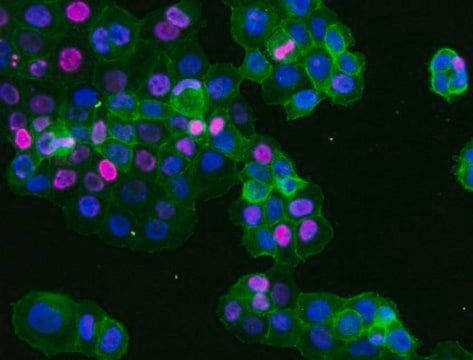MAK321
Acetaldehyde Assay Kit
sufficient for 100 fluorometric tests
Synonim(y):
Acetaldehyde Quantitation Kit
About This Item
Polecane produkty
zastosowanie
sufficient for 100 fluorometric tests
moc wejściowa
culture(s)
food(s)
serum
plasma
tissue
urine
beverage(s)
Zastosowanie
cosmetics
food and beverages
metoda wykrywania
fluorometric
powiązane choroby
gastrointestinal diseases
temp. przechowywania
−20°C
Powiązane kategorie
Opis ogólny
Zastosowanie
- Food and Beverage Testing
- Gastrointestinal Disease Research
Cechy i korzyści
Simplified Process: Experience a streamlined process with the addition of only a single working reagent and a 30 minute room temperature reaction, reducing complexity and saving valuable time and effort.
Compatibility with High-Throughput Systems: Easily incorporate our kit into high-throughput handling systems, ensuring smooth and accurate processing, enhancing efficiency in your laboratory workflow.
Przydatność
Zasada
Inne uwagi
Hasło ostrzegawcze
Danger
Zwroty wskazujące rodzaj zagrożenia
Zwroty wskazujące środki ostrożności
Klasyfikacja zagrożeń
Eye Dam. 1 - Met. Corr. 1 - Skin Corr. 1B
Kod klasy składowania
8A - Combustible corrosive hazardous materials
Certyfikaty analizy (CoA)
Poszukaj Certyfikaty analizy (CoA), wpisując numer partii/serii produktów. Numery serii i partii można znaleźć na etykiecie produktu po słowach „seria” lub „partia”.
Masz już ten produkt?
Dokumenty związane z niedawno zakupionymi produktami zostały zamieszczone w Bibliotece dokumentów.
Nasz zespół naukowców ma doświadczenie we wszystkich obszarach badań, w tym w naukach przyrodniczych, materiałoznawstwie, syntezie chemicznej, chromatografii, analityce i wielu innych dziedzinach.
Skontaktuj się z zespołem ds. pomocy technicznej



